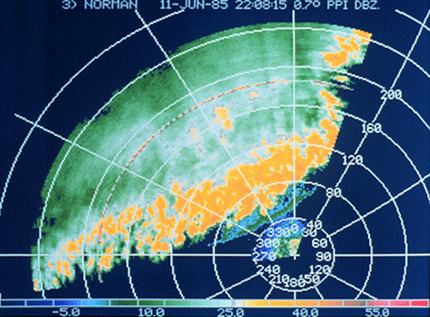


Composite reflectivity is very useful for. Earlier studies have suggested the ability of orographic effects to produce precipitation in both prefrontal and postfrontal regions (Browning et al. A front is a narrow zone across which temperature, humidity, and wind change abruptly. The highly organized band-associated circulations suggest the importance of their inclusion in diagnostic calculations. Consequently, it gives a plan view of the most intense portions of a precipitating system regardless of its altitude. The frontogenesis calculation gives approximately a 2–4 h doubling time of the horizontal potential temperature gradient associated with the warm front, at mid-levels.
#Frontal systems in a us doppler radar generator#
As of 2014, there were 45 operational TDWR-Supplemental Project Generator (SPG) radar. airports with frequent exposure to thunderstorms. The system is primarily used to detect hazardous wind shear conditions, precipitation, and winds over and near major U.S. Some diagnostic calculations of ageostrophic winds, frontogenesis and vorticity production are presented. The Terminal Doppler Weather Radar (TDWR) network is a Doppler weather radar system operated by the Federal Aviation Administration (FAA). Near the surface additional circulations were produced by pressure perturbations resulting from cooling associated with melting snow. The precipitation bands extended from this layer down to the surface. Dual polarization weather radars are the standard for modern radar systems, producing clear, clutter-free, high-resolution measurements of rainfall events. Catto and Pfahul (2013) observed similar kind of precipitation extreme associated with frontal systems. Alaska Maps Pacific Islands Map Ocean Maps Previous Days Weather Maps. These precipitating bands embedded in large-scale monsoon system seem to be playing a key role in producing the extreme rainfall observed on 15th August 2018. High Resolution Version Legend About These Maps Animated Forecast Maps. This helps us understand atmospheric processes to help improve forecasts of significant weather events. To view local information, select area of interest and click on the image below. It is suggested that these bands were formed by highly organized vertical circulations in a 2.5 km thick layer just above the warm frontal zone. NSSL uses a mobile Doppler radar to position close to tornadic storms to scan the entire lifecycle of a tornado. The dominant precipitation bands were oriented transverse to the mid-level winds, and they were spaced ∼110 km apart. The precipitation occurring ahead of the surface warm front was banded. This paper presents a case study of the structure of a warm frontal region as deduced from Doppler radar observations.


 0 kommentar(er)
0 kommentar(er)
